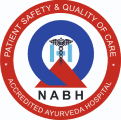



Consult India’s Best Ayurvedic Osteoarthritis Specialists for Natural Cure
AyurVAID Hospitals is now a part of Apollo Hospitals Group.
Ayurveda views Osteoarthritis as a clinical condition which requires replenishment of lubrication around the affected joints, achievable through the process of bṛṁhaṇa (satiation). Ayurvedic Osteoarthritis treatment emanating from natural remedies for Arthritis involves internal medications and external therapies, which are patient-specific and guided by the stage of the disease. The patient’s response to treatment is determined by the duration and degree of the manifested disease, as well as their age and the cause of the condition. For example, Osteoarthritis of a degenerative cause and of recent onset can be reversed through natural treatment for osteoarthritis using specific medications and exercises, while patients with later-stage chronic symptoms will, at a minimum, see greatly reduced pain and an increased range of movement. At all stages, the progression of the deterioration can be arrested using Ayurvedic treatment for Osteoarthritis.
As a disease of progressive nature, often requiring regular follow-ups, AyurVAID Hospitals typically recommends our Osteoarthritis Disease Management Program, based on Panchakarma principles, for maximum results. However, the treatment for Osteoarthritis does not necessarily require extensive therapies or medications. In many cases, a few key internal medications, along with some localized therapies, will suffice to relieve the disease. AyurVAID today stands tall in Ayurvedic Osteoarthritis treatment in Bangalore (Karnataka), Kochi (Ernakulam, Kerala) and Kalmatia in Himalayas (Almora, Uttarakhand).
AyurVAID is India’s 1st Ayurveda hospital to be accredited by NABH (National Accreditation Board for Hospitals & Healthcare Providers), Quality Council of India.
While treating Osteoarthritis with ayurveda, the joints are the seats of śleṣaka kapha (lubricating substance), which facilitates the appropriate and effective mobility of these joints. Due to the aging process and other degenerative causes the vāta (one of the three humors that is responsible for all types of movements) increases generally, and in these sites. This in due course of time desiccates the lubricating substance. This is a condition termed as sandhigata vāta(osteo arthritis). This limits the range of activity of the joints, causing stiffness and pain, reflected in conditions such as Knee Osteoarthritis.

Osteoarthritis Vs Rheumatoid Arthritis, the main difference is the cause behind the joint symptoms. Osteoarthritis is caused by mechanical wear and tear on joints. Rheumatoid arthritis is an autoimmune disease in which the body's own immune system attacks the body's joints. Similarly, it should be clearly understood at the very outset that Osteoarthritis and Osteoporosis are common but two different conditions. While Osteoporosis causes bones to become fragile and prone to fracture, Osteoarthritis is a common, crippling and age-related degenerative condition, where the cartilage cushioning the joints wears down over time. It is the most common articular disease worldwide and one often hears of Osteoarthritis knee, Osteoarthritis ankle etc. Osteoarthritis typically affects joints of knees, spine, hips and hands. Osteoarthritis symptoms develop slowly and worsen over time. These include:
Osteoarthritis may first appear between ages 30 and 40, and is present in almost everyone by age 70. It occurs equally in both sexes up to the age of 55; after 55, the incidence is higher in women. It is estimated that approximately 4% of people are affected and in India the incidence of osteoarthritis in India is as high as 12 per cent. 45% of women over the age of 65 have symptoms of osteoarthritis, while radiological evidence shows OA in 70% of women above the age of 65. OA was estimated to be the 10th leading cause of non-fatal burden in the world in 1990, accounting for 2.8% of total YLD (Years lived with disease). In the Version 2 estimates for the Global Burden of Disease 2000 study, published in the World Health Report 2002(5), OA is the 4th leading cause of YLDs at global level.
Studies suggest that increasing age, BMI (body mass index) and history of more frequent physical activity in younger years were risk factors for knee OA.Areas where significant relief can still be expected:
Osteoarthritis developed secondary to obesity and diabetes mellitus needs to be treated for the underlying disease initially, and their response to the treatment is variable.
In chronic and severe Osteoarthritis in which deformity has set in -and in those conditions where knee replacement has been advocated - treatment can give minimal benefits.
We work towards whole person health through classical Ayurveda science. Our Ayurveda case studies are the first-line evidence in Ayurvedic medical literature as they present the original observations from our Ayurveda practitioners. The case studies are published taking patient’s consent and maintaining patient anonymity.